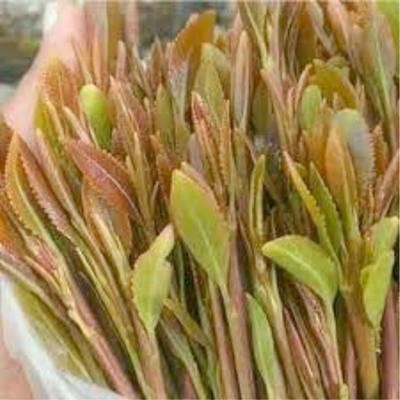Current Pharmaceutical Biotechnology ( IF 2.2 ) Pub Date : 2020-07-31 , DOI: 10.2174/1389201021666200121142300 Mohammed M Al Moaleem 1 , Amit Porwal 1 , Nasser M Al Ahmari 2 , Mansoor Shariff 2

|
Background: Nowadays khat chewing habit is increasing among population in southern part of Saudi Arabia, Jazan and till date there is no literature investigating the effect of khat on oral biofilm on dental materials.
Objective: To evaluate and compare the bacterial biofilm on different types of dental restorative materials used in replacing missing tooth structures among khat chewers and non-khat chewers.
Materials and Methods: Hundred and twenty biofilm samples were collected from different dental restorations, such as All-ceramic (AL), Metal Ceramic (MC), Metal crowns or bridges (M), Composite (C), Glass Ionomer (GI) and Amalgam (A) restorations in non-khat and khat chewers (K). DNA extraction was done and subjected to PCR. Bacterial species, such as Streptococcus, Neisseria, Bacillus, Granulicatella and Veillonella were identified and counted. PCR products were also sequenced to detect similarity. Association between bacterial type and dental materials among non-khat and khat chewers were tested with Chi-Square test (Fishers Exact test).
Results: The frequency and percentage of Streptococcus species were marginally higher among khat chewers (42; 70%) compared with non-khat chewers (38; 63.3%) group. But the Veillonella species were higher among non-khat chewers (9: 15%), compared to the khat chewers group (7; 11.7%). No statistically significant difference was detected among species in both groups. In non-khat and khat chewer group, the maximum hits were related to Streptococcus spp. in glass ionomer, amalgam, and composite (restorative materials), followed by metal ceramic and metal (prosthetic materials). Veillonella spp. showed maximum hits in the metal group among non-khat chewers and in all-ceramic among khat chewers. Statically significant differences were recorded among composite and amalgam samples with p values 0.047 and 0.036 in khat chewer group.
Conclusion: Khat chewers showed statistically significant differences in oral biofilm in the composite and amalgam restorative materials, but there were no significant differences found among any materials and species between the groups.
中文翻译:

Khat Chewers中牙科材料的口腔生物膜。
背景:如今,沙特阿拉伯南部的贾山(Jazan)人口中卡塔叶的咀嚼习惯正在增加,到目前为止,尚无文献研究卡塔叶对口腔材料上口腔生物膜的影响。
目的:评估和比较不同类型的牙齿修复材料上的细菌生物膜,这些材料用于替代卡塔尔咀嚼器和非卡特咀嚼器中的缺失牙齿结构。
材料和方法:从不同的牙齿修复物中收集了一百二十个生物膜样品,例如全瓷(AL),金属陶瓷(MC),金属牙冠或牙桥(M),复合材料(C),玻璃离聚物(GI)和非卡塔叶和卡塔叶咀嚼片(K)中的汞合金(A)修复物。进行DNA提取并进行PCR。鉴定并计数细菌种类,例如链球菌,奈瑟菌,芽孢杆菌,谷类葡萄球菌和韦永氏菌。PCR产物也被测序以检测相似性。用卡方检验(Fishers Exact检验)检验了非卡特和卡塔叶咀嚼物中细菌类型与牙科材料之间的关联。
结果:与非卡特咀嚼者(38; 63.3%)组相比,卡塔咀嚼物(42; 70%)中链球菌种类的频率和百分比略高。但是,与卡塔叶咀嚼片组(7; 11.7%)相比,非卡塔叶咀嚼片中的Veillonella种类更高(9:15%)。两组之间在物种间均未发现统计学上的显着差异。在非卡其色和卡塔叶嚼组中,最大的命中率与链球菌属有关。在玻璃离聚物,汞齐和复合材料(修复材料)中,其次是金属陶瓷和金属(修复材料)。Veillonella spp。在非卡其色咀嚼物和全陶瓷的卡塔尔咀嚼物中,金属类的命中率最高。卡塔咀嚼组的复合材料和汞合金样品之间的静态差异显着,p值分别为0.047和0.036。
结论:Khat咀嚼片在复合材料和汞齐修复材料中的口腔生物膜上显示出统计学上的显着差异,但两组之间在任何材料和物种之间均未发现显着差异。











































 京公网安备 11010802027423号
京公网安备 11010802027423号